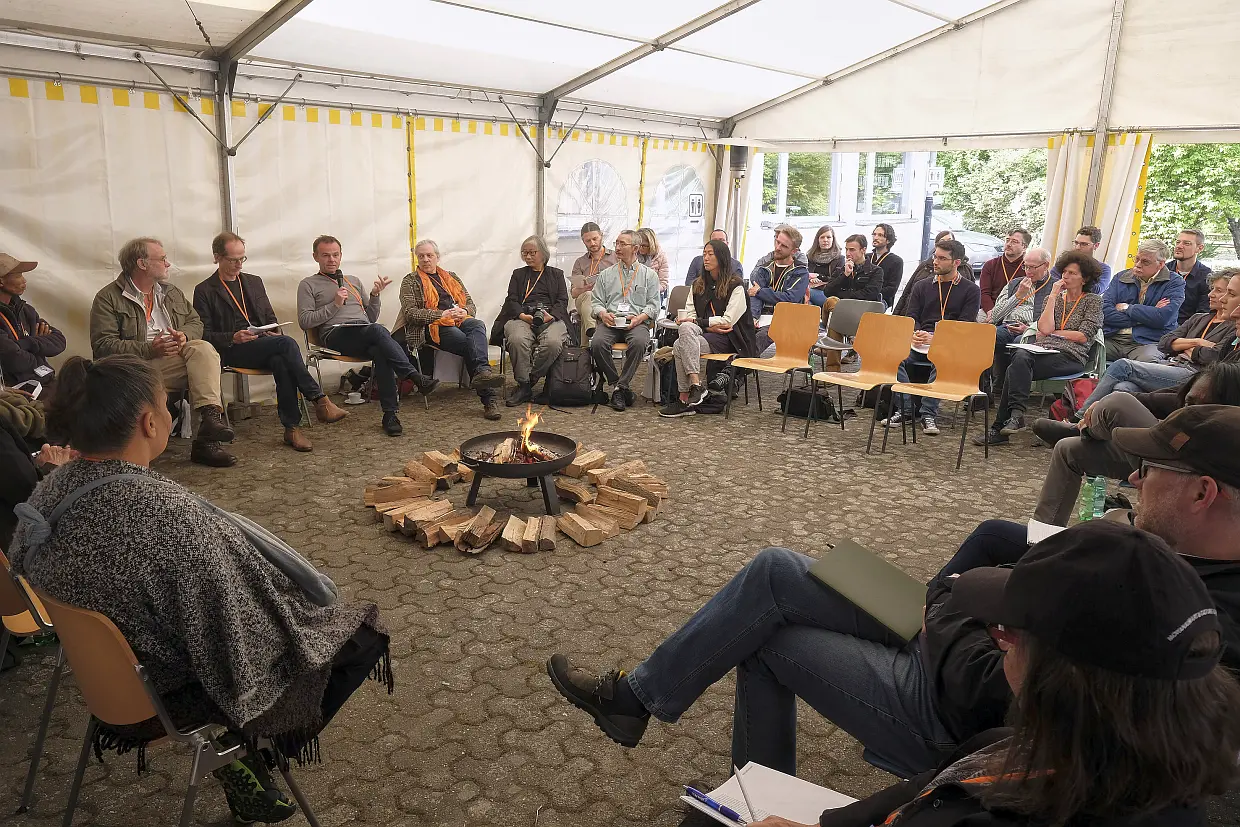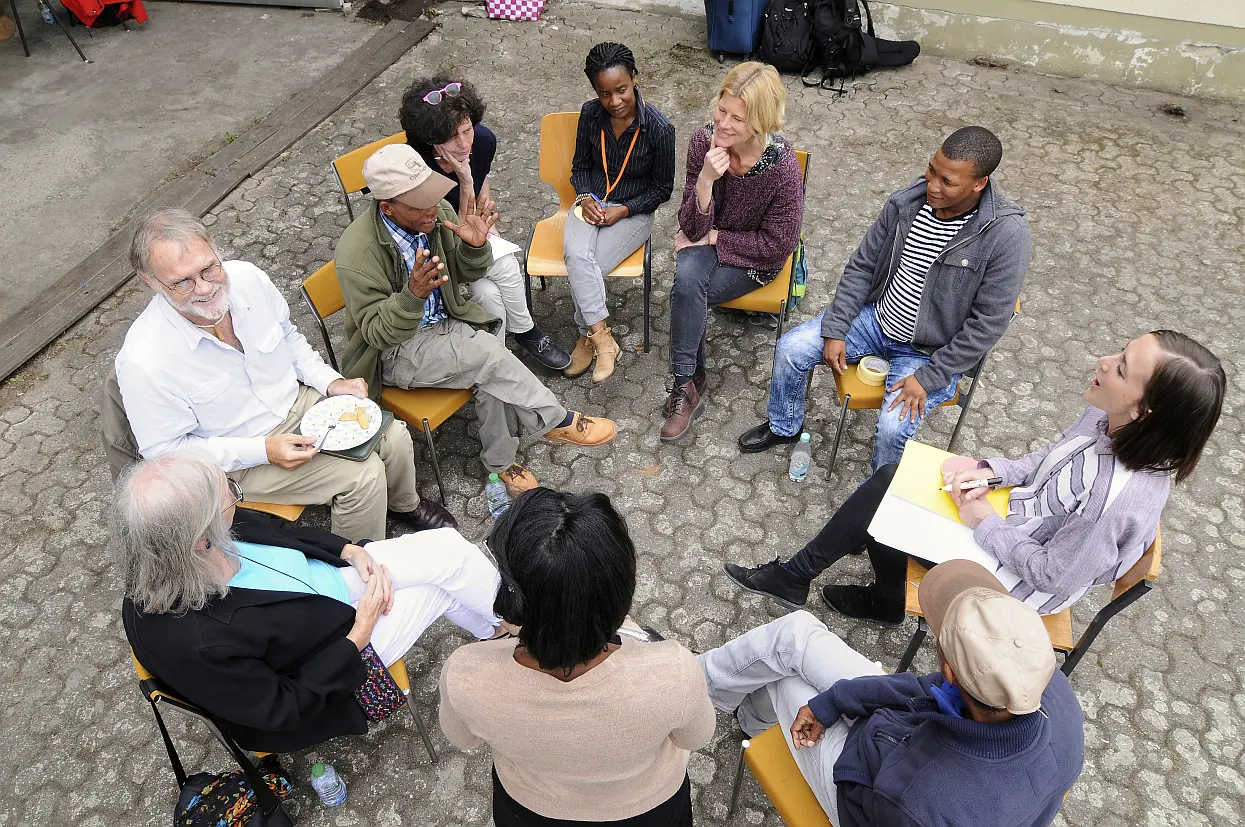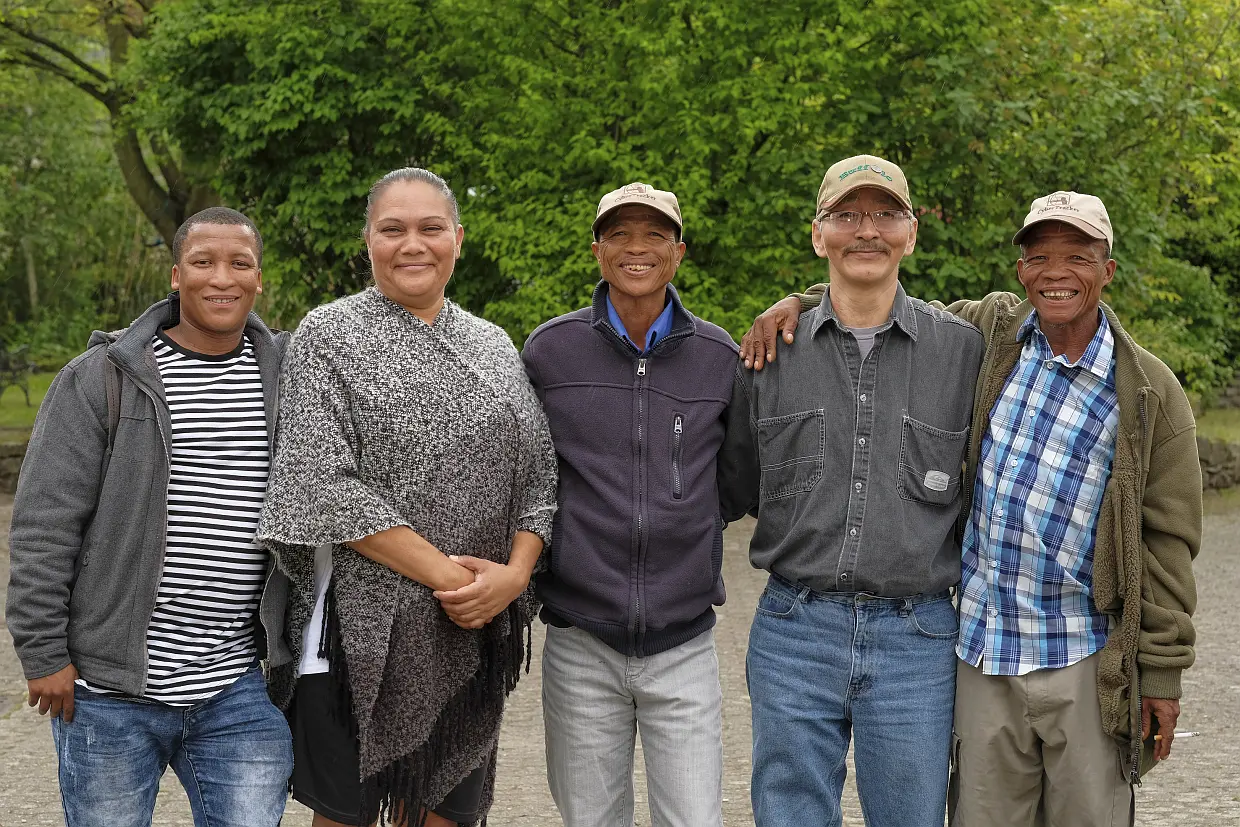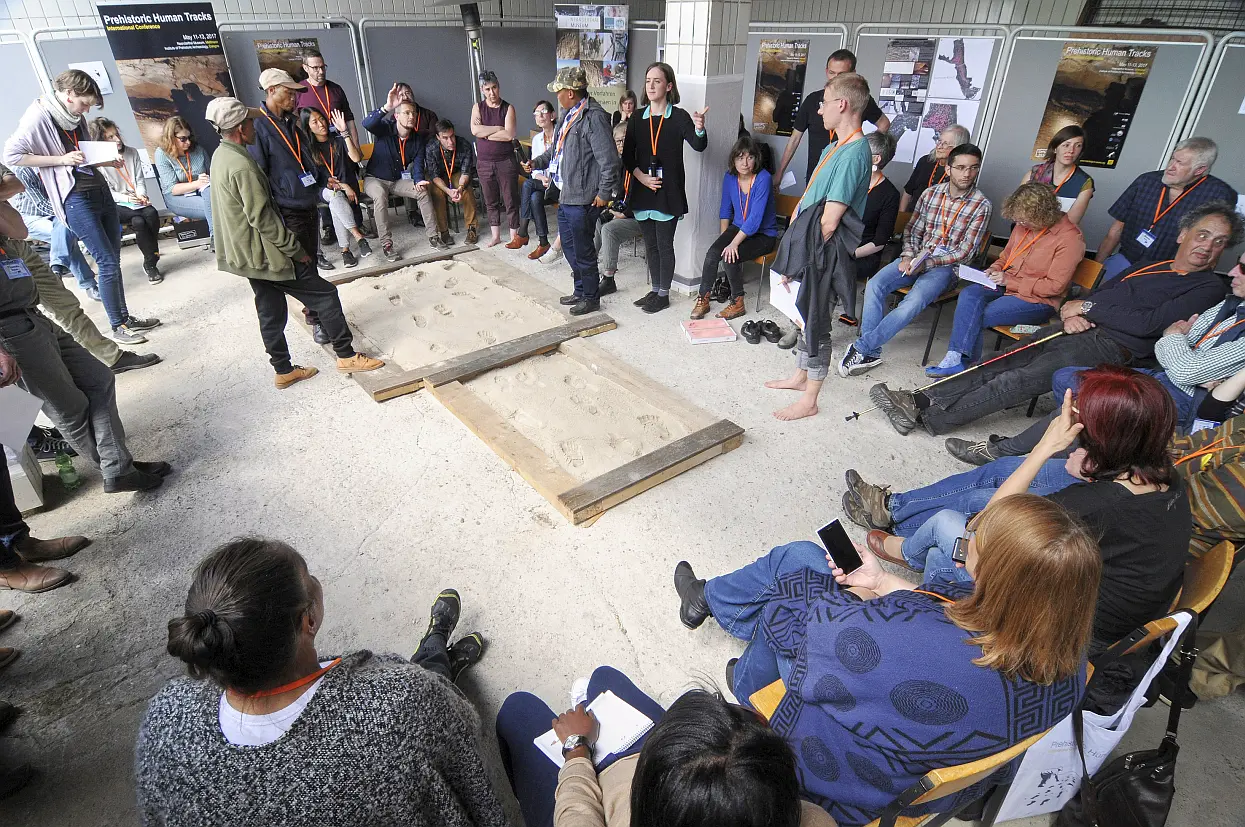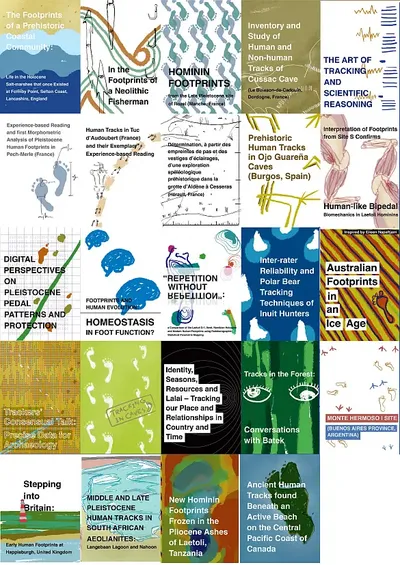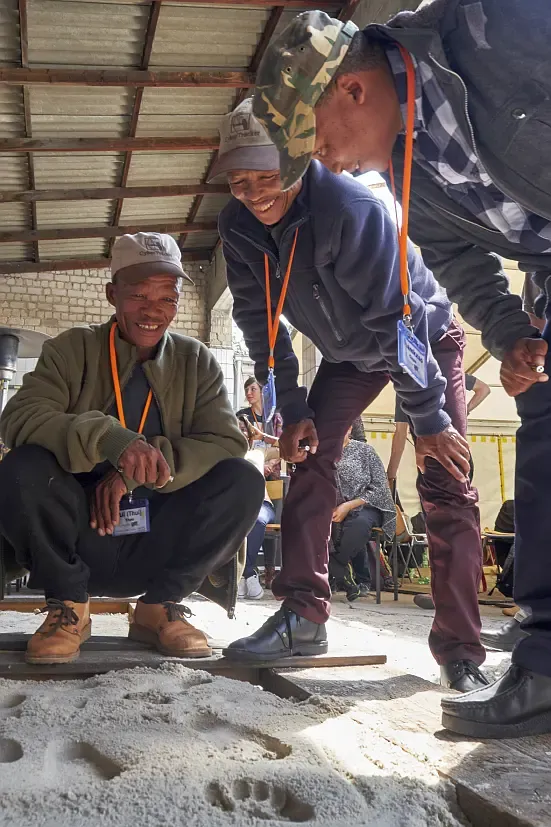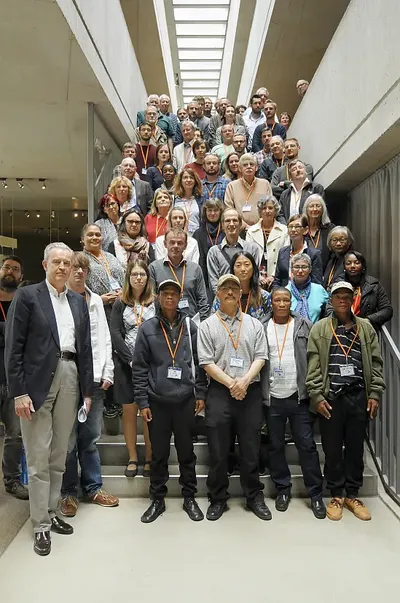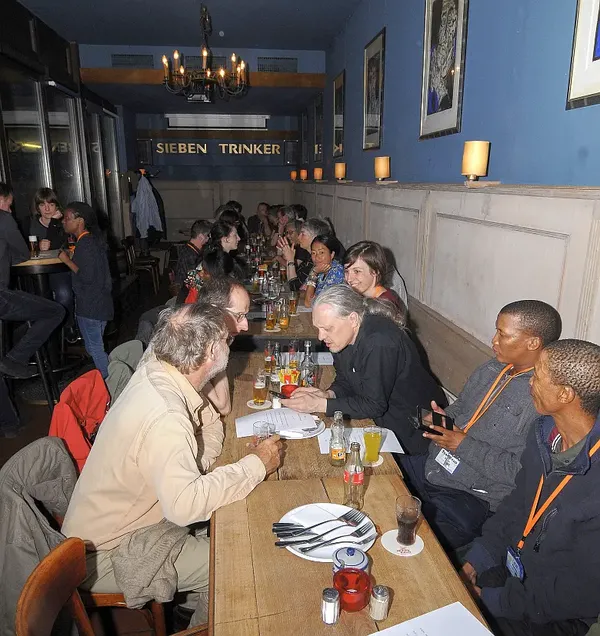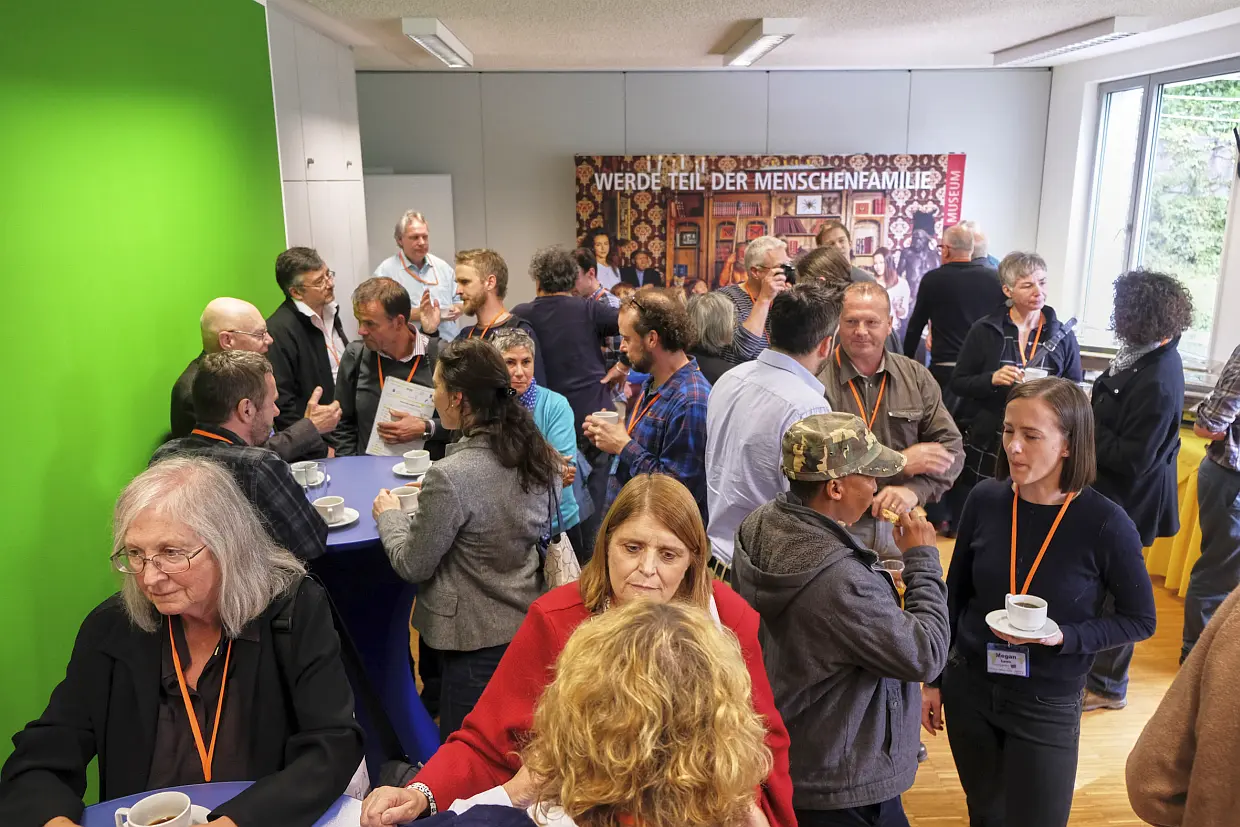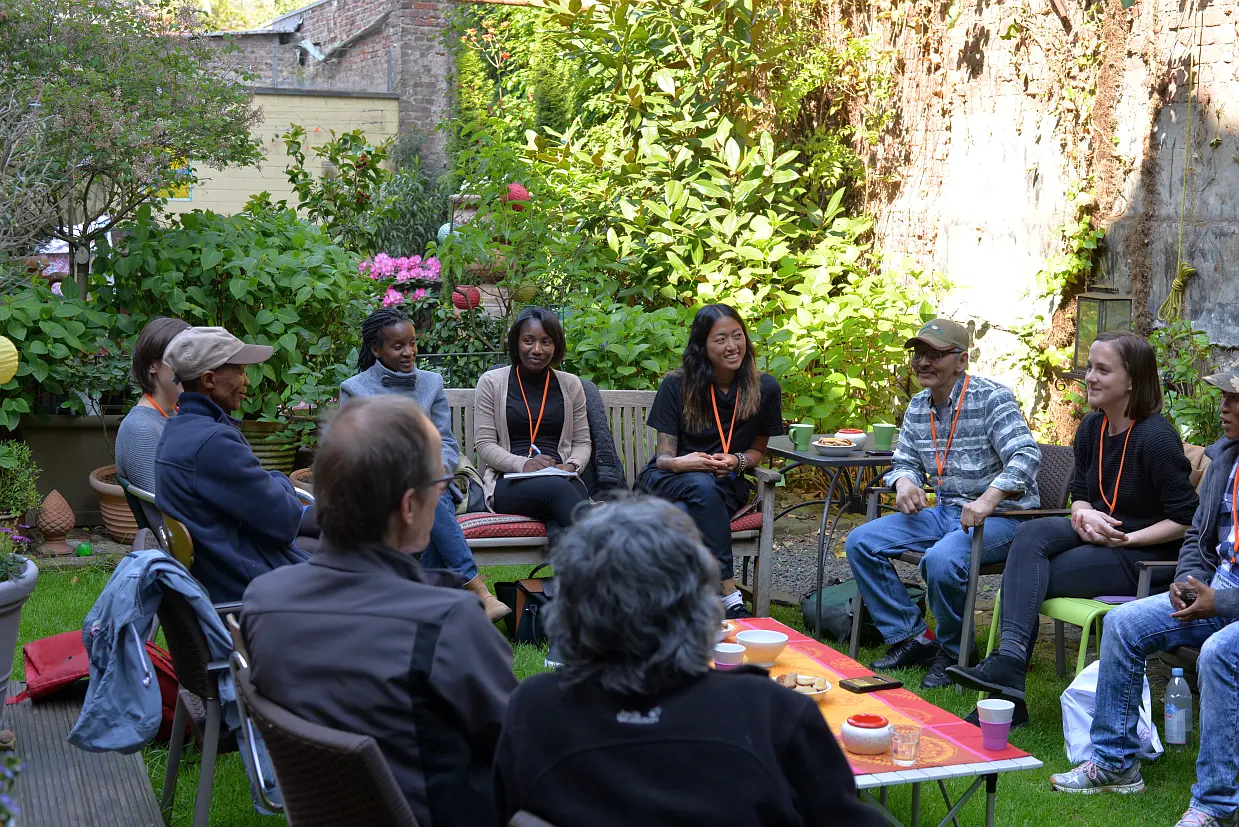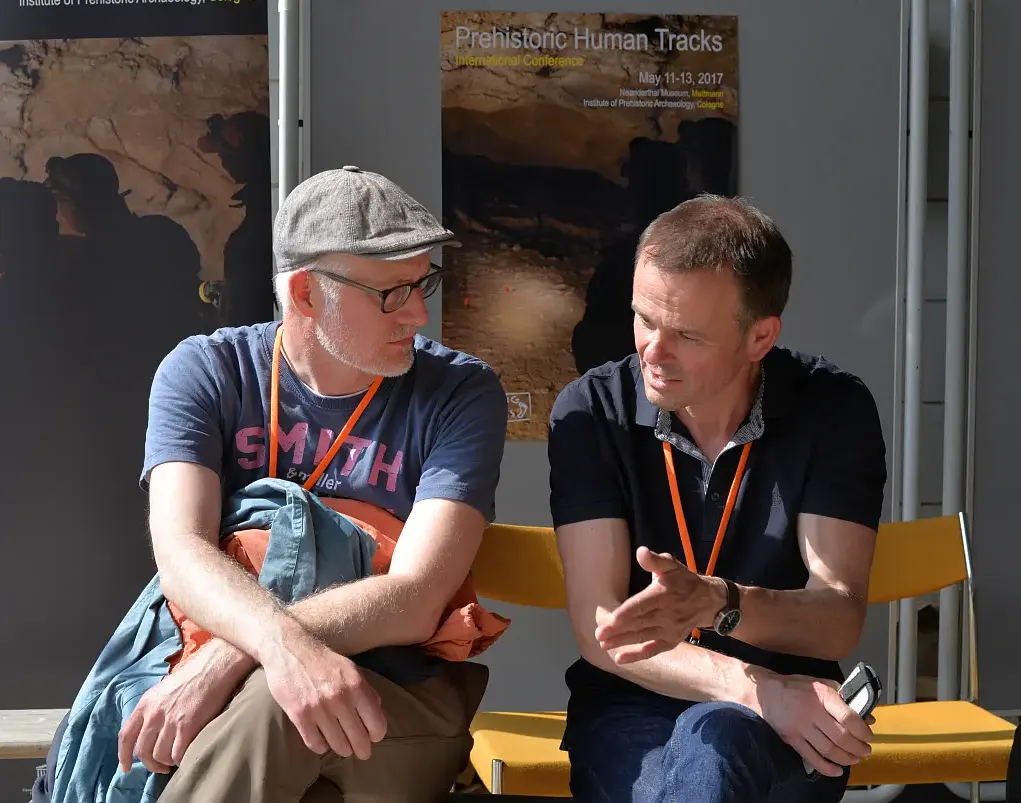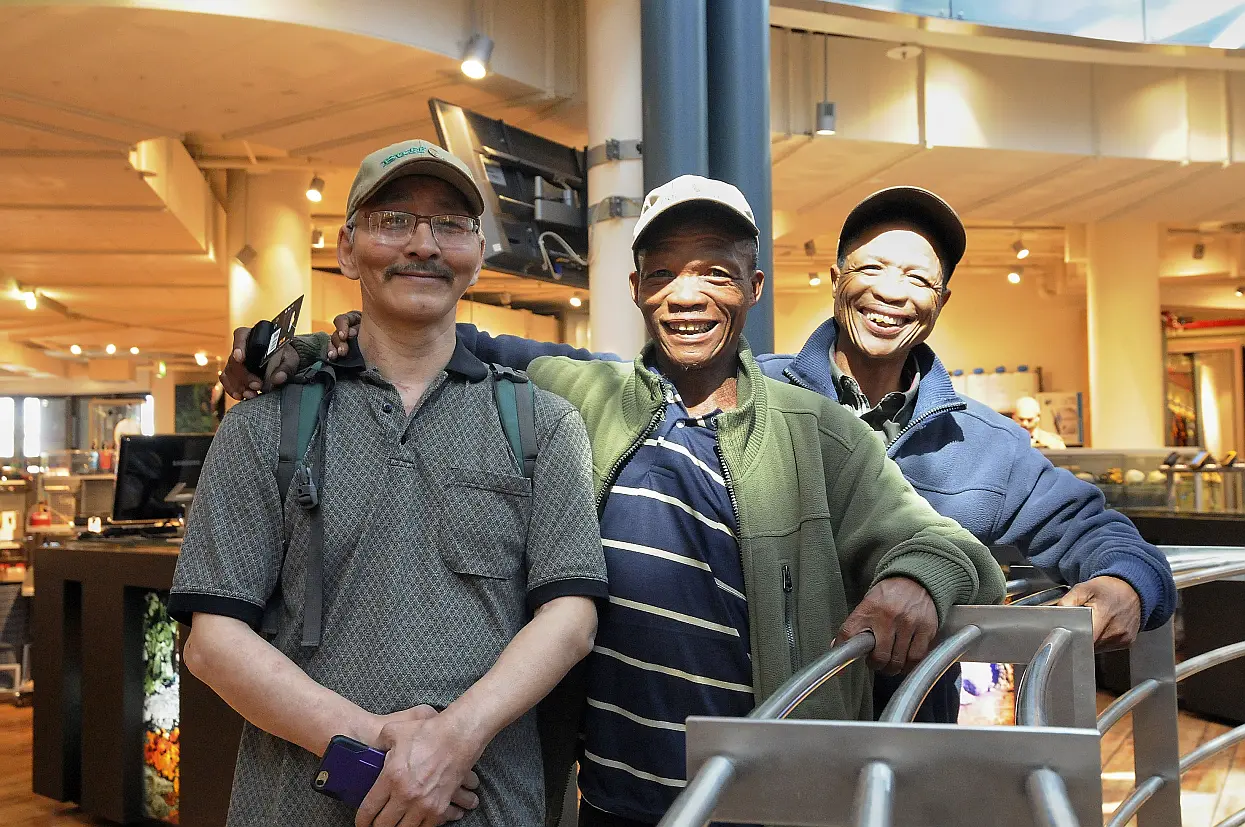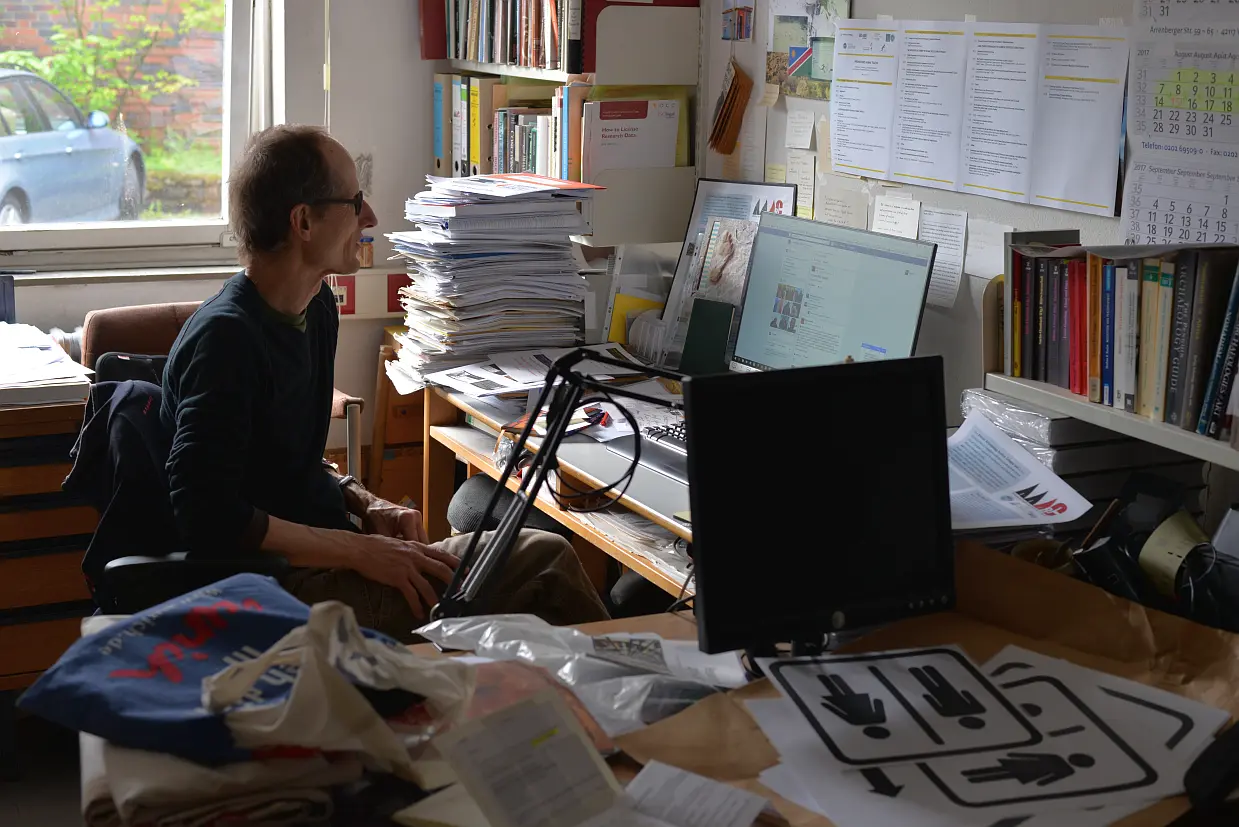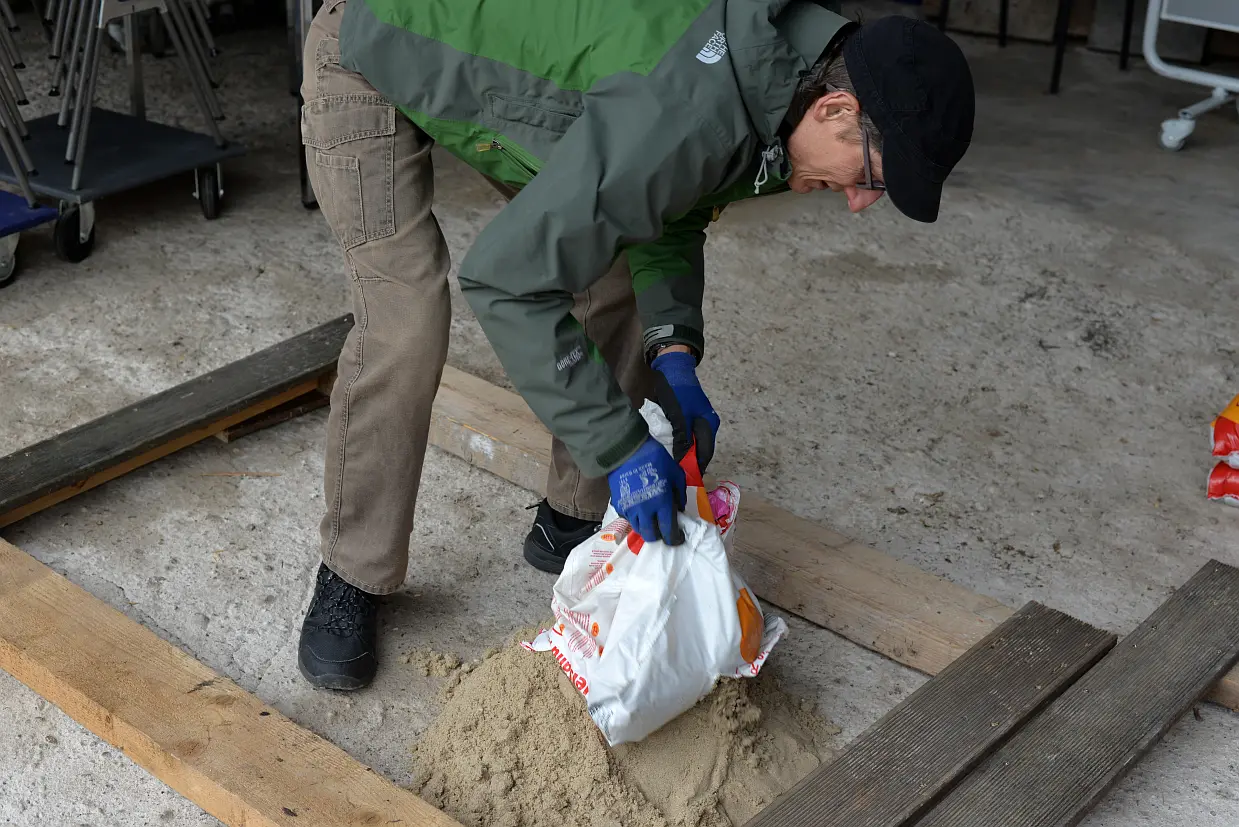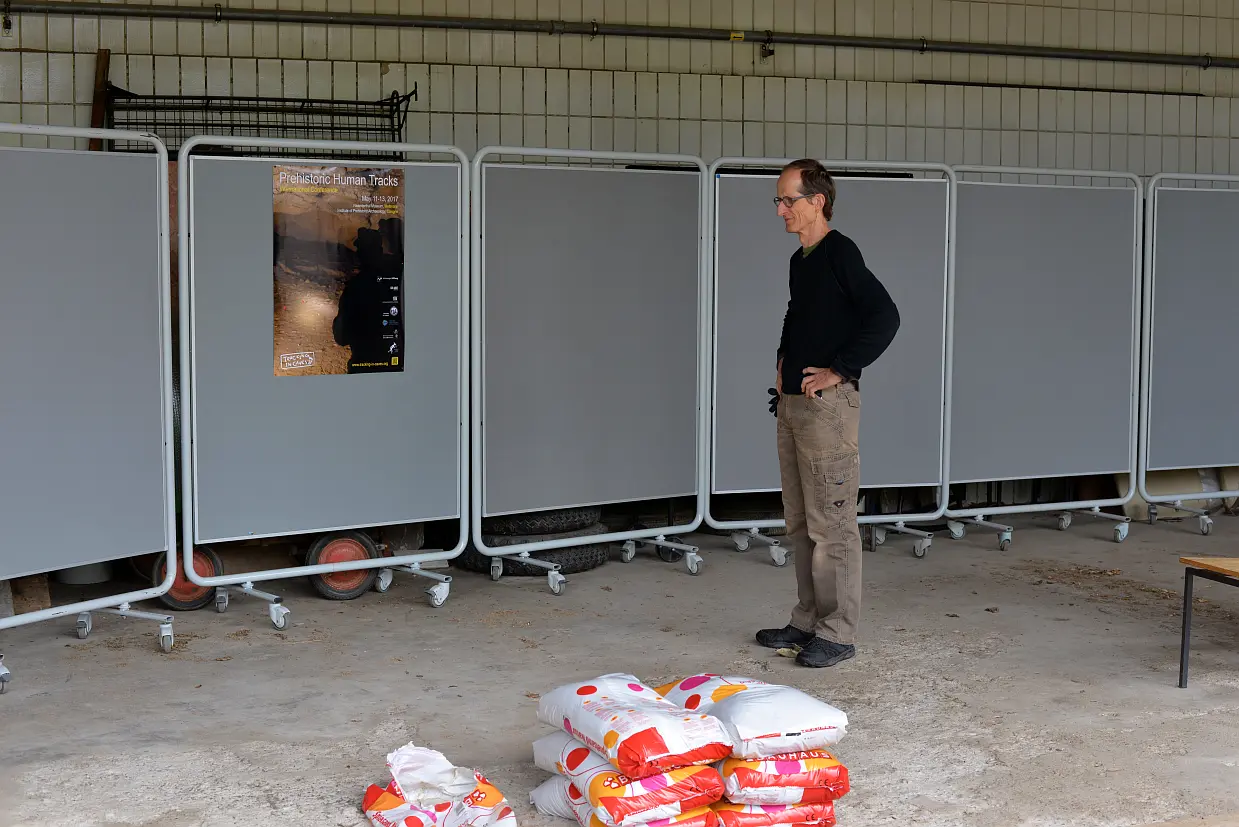Cologne, 11.05 – 14.05.2017
Andreas Pastoors
The ‘International Conference on Prehistoric Human Tracks’ took place from 11 to 14 May 2017 at the University of Cologne and the Neanderthal Museum (Mettmann). In addition to 40 invited participants from five continents, a good 30 visitors from a wide range of social backgrounds attended the conference. The patron of the conference was Prof. Dr Hermann Parzinger, who emphasised in his welcoming speech that the combination of very different cultures of knowledge practised at the conference was a model of what was also to be addressed at the Humboldt Forum in Berlin, which he headed as founding director.
Workshop concept
Designed as a scientific conference and hence focussed on the exchange of knowledge, the conference offered the first opportunity worldwide for indigenous, academic and conservation experts to discuss the same topic, namely the human footprint. In addition to conventional lectures, communication formats were chosen that are unusual in academic exchange but more common among indigenous communities: in a ‘fireside talk’, participants sat in a circle around a fire; in a practical workshop, all participants stood and sat around specially created trace fields. For the scientists present, who were mainly observing, the alternating explanations and conversations between the San from Namibia, an Inuit from Canada and an Aborigine from Australia were of particular interest.
Presentations
This first day of the conference with its unconventional exchange formats was followed by two days of presentations, several of which were co-authored by and with the participation of indigenous experts. On the last day of the conference on 14 May, a workshop was held with the indigenous experts to work out how and by what means they would like to report on the conference's progress and purpose in their local communities.
This workshop resulted in a clear mandate for two authors who are working on finalising this so-called ‘Community Report’. First and foremost, this report is designed to enable the tracking experts to illustrate their personal impressions and experiences in the context of the conference. However, elements that go beyond this and relate to more general knowledge about tracks and tracking should be written in such a way that they serve as generally applicable illustrative material and can therefore be used independently of the context of the conference.
media response
The media response was extremely extensive with reports in national newspapers such as DIE ZEIT (a whole page), Generalanzeiger, Frankfurter Rundschau, die Welt, Süddeutsche as well as in numerous regional newspapers, based on a detailed dpa report. Numerous radio stations (WDR 1, 2, 3 and 5, WDR Cosmo, SWR 3 and 5, DLF, D-Radio Kultur, D-Radio Wissen and others) and television stations (WDR Aktuelle Stunde, Sat1-West) reported or broadcast interviews (some live). In this way, completely different interest groups were addressed and the topic was publicised to an unusually wide audience. The organisers were particularly encouraged by the fact that all of the reports made it clear that different knowledge cultures are of equal value, i.e. that profound expert knowledge cannot only arise in a specific, particularly Western, cultural context. And that the knowledge of other cultures can also be enriching for Western science.
Further reading and further listening
- Project homepage: tracking-in-caves.org
- WDR Zeitzeichen vom 11.05.2022: Erster internationaler Kongress der Spurenleser in Köln (Podcast)
- Pastoors, Andreas; Lenssen-Erz, Tilman; Ciqae, Tsamgao; Kxunta, /Ui; Thao, Thui; Galant, Philippe; Weiss, Marcel; Uthmeier, Thorsten (2024). Reading Mesolithic Human Tracks with a Multi-Method Approach in the Paul Ambert Gallery of Aldène cave (Cathala Level, Hérault, France). Quartär 70: 97–138.
DOI: 10.7485/qu.2023.70.108130 - Pastoors, Andreas & Lenssen-Erz, Tilman (Eds.) (2021). Reading Prehistoric Human Tracks. Methods & Material. Heidelberg: Springer Nature.
DOI: 10.1007/978-3-030-60406-6 - Pastoors, Andreas & Lenssen-Erz, Tilman (2020). Tracking in Caves: Indigenous Ichnology. In: Claire L. Smith (Ed.), Encyclopedia of Global Archaeology. Cham: Springer, 1–6.
DOI: 10.1007/978-3-319-51726-1_3430-1 - Lenssen-Erz, Tilman & Pastoors, Andreas (2018). Tracking in Caves. Episoden aus dem Leben eiszeitlicher Höhlenkünstler. Analyse menschlicher Fussabdrücke mit indigenem Wissen und Methoden westlicher Wissenschaften. In: Jürgen Richter (Ed.), 111 Jahre prähistorische Archäologie in Köln. Rahden (Westf.): Marie Leidorf (9), 122–129.
PDF Download - Lenssen-Erz, Tilman; Pastoors, Andreas; Ciqae, Tsamkgao; Kxunta, Ui; Thao, Thui; Bégouën, Robert; Biesele, Megan & Clottes, Jean (2018). Tracking in caves. Reading human spoor in ice age caves with San hunters. In: R. Fleming Puckett & Kazunobu Ikeya (Eds.), Research and activism among Kalahari San today. Ideas, challenges, and debates, Osaka: Yubunsha Co. (Senri Ethnological Studies, 99), 103–128.
PDF Download - Ludwig, Bettina; Johannes, Maria; Lenssen-Erz, Tilman & Pastoors, Andreas (2017). Prehistoric human tracks. International Conference. Community Report. Köln.
PDF Download - Pastoors, Andreas; Lenssen-Erz, Tilman; Breuckmann, Bernd; Ciqae, Tsamkxao; Kxunta, Ui; Rieke-Zapp, Dirk & Thao, Thui (2017). Experience based reading of Pleistocene human footprints in Pech-Merle. Quaternary International (430): 155–162.
DOI: 10.1016/j.quaint.2016.02.056 PDF Download - Lenssen-Erz, Tilman (2015). Road movie show. ‚Tracking in Caves – The Homecoming‘. Heinrich-Barth-Kurier 15 (1): 11-13.
PDF Download - Lenssen-Erz, Tilman & Pastoors, Andreas (2015). Fährtenleser blicken 17000 Jahre in die Vergangenheit. Archäologie in Deutschland (4): 12-17 .
PDF Download - Pastoors, Andreas; Lenssen-Erz, Tilman; Ciqae, Tsamgao; Kxunta, /Ui; Thao, Thui; Bégouën, Robert et al. (2015) Tracking in Caves. Experience based reading of Pleistocene human footprints in French caves. Cambridge Archaeological Journal 25 (3): 551–564.
DOI: 10.1017/S0959774315000050 PDF Download - Lenssen-Erz, Tilman (2013). Tracking in Caves. Indigenes Wissen treibt die Archäologie voran. Heinrich-Barth-Kurier 13 (2): 3-8.
PDF Download
Funding
The HBI was involved in the organisation and implementation of the conference and supported the open access and printing costs of the scientific conference proceedings::
Pastoors, Andreas & Lenssen-Erz, Tilman (Eds.) (2021). Reading Prehistoric Human Tracks. Methods & Material. Heidelberg: Springer Nature.
DOI: 10.1007/978-3-030-60406-6


